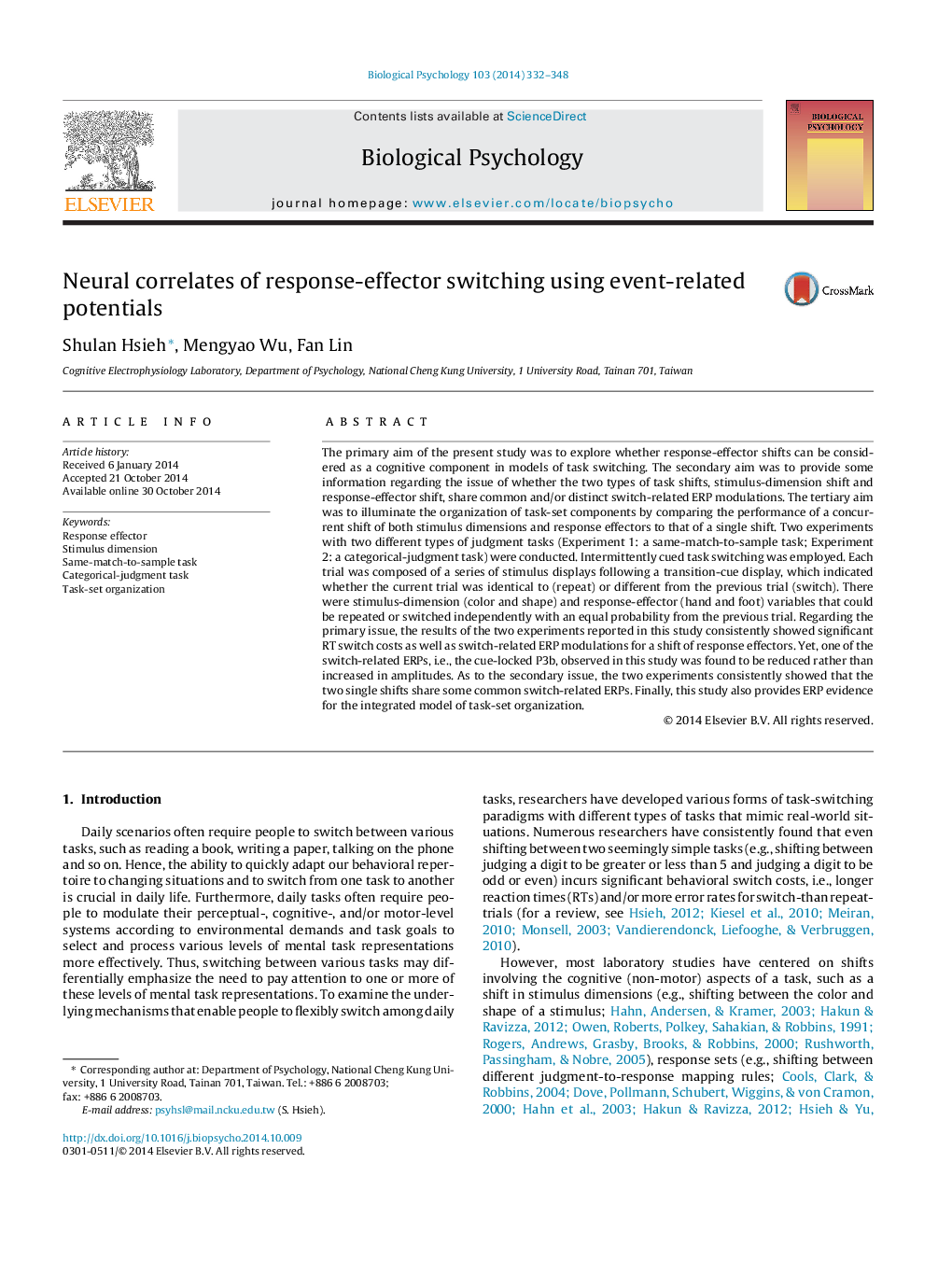| Article ID | Journal | Published Year | Pages | File Type |
|---|---|---|---|---|
| 7278810 | Biological Psychology | 2014 | 17 Pages |
Abstract
The primary aim of the present study was to explore whether response-effector shifts can be considered as a cognitive component in models of task switching. The secondary aim was to provide some information regarding the issue of whether the two types of task shifts, stimulus-dimension shift and response-effector shift, share common and/or distinct switch-related ERP modulations. The tertiary aim was to illuminate the organization of task-set components by comparing the performance of a concurrent shift of both stimulus dimensions and response effectors to that of a single shift. Two experiments with two different types of judgment tasks (Experiment 1: a same-match-to-sample task; Experiment 2: a categorical-judgment task) were conducted. Intermittently cued task switching was employed. Each trial was composed of a series of stimulus displays following a transition-cue display, which indicated whether the current trial was identical to (repeat) or different from the previous trial (switch). There were stimulus-dimension (color and shape) and response-effector (hand and foot) variables that could be repeated or switched independently with an equal probability from the previous trial. Regarding the primary issue, the results of the two experiments reported in this study consistently showed significant RT switch costs as well as switch-related ERP modulations for a shift of response effectors. Yet, one of the switch-related ERPs, i.e., the cue-locked P3b, observed in this study was found to be reduced rather than increased in amplitudes. As to the secondary issue, the two experiments consistently showed that the two single shifts share some common switch-related ERPs. Finally, this study also provides ERP evidence for the integrated model of task-set organization.
Related Topics
Life Sciences
Neuroscience
Behavioral Neuroscience
Authors
Shulan Hsieh, Mengyao Wu, Fan Lin,
